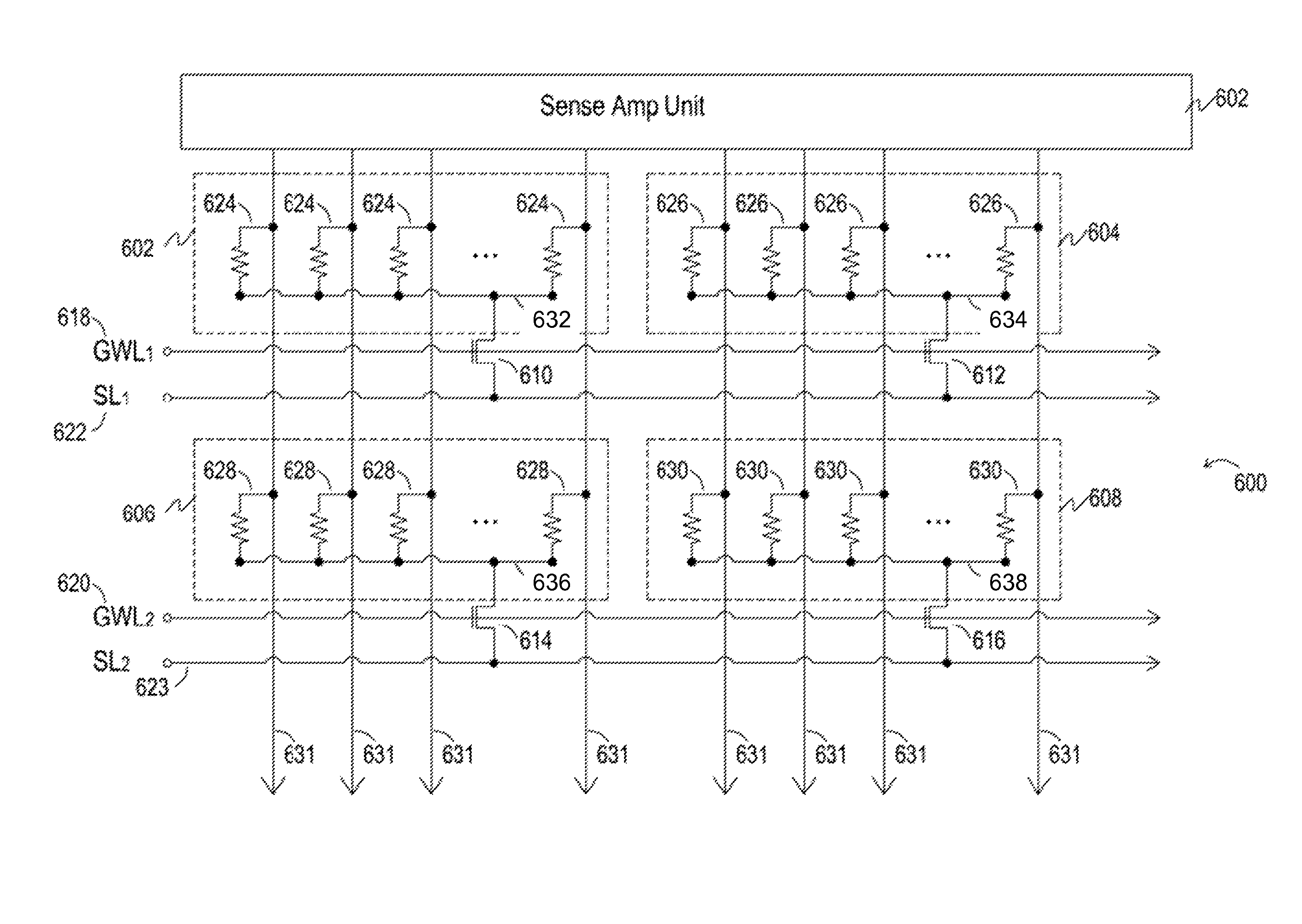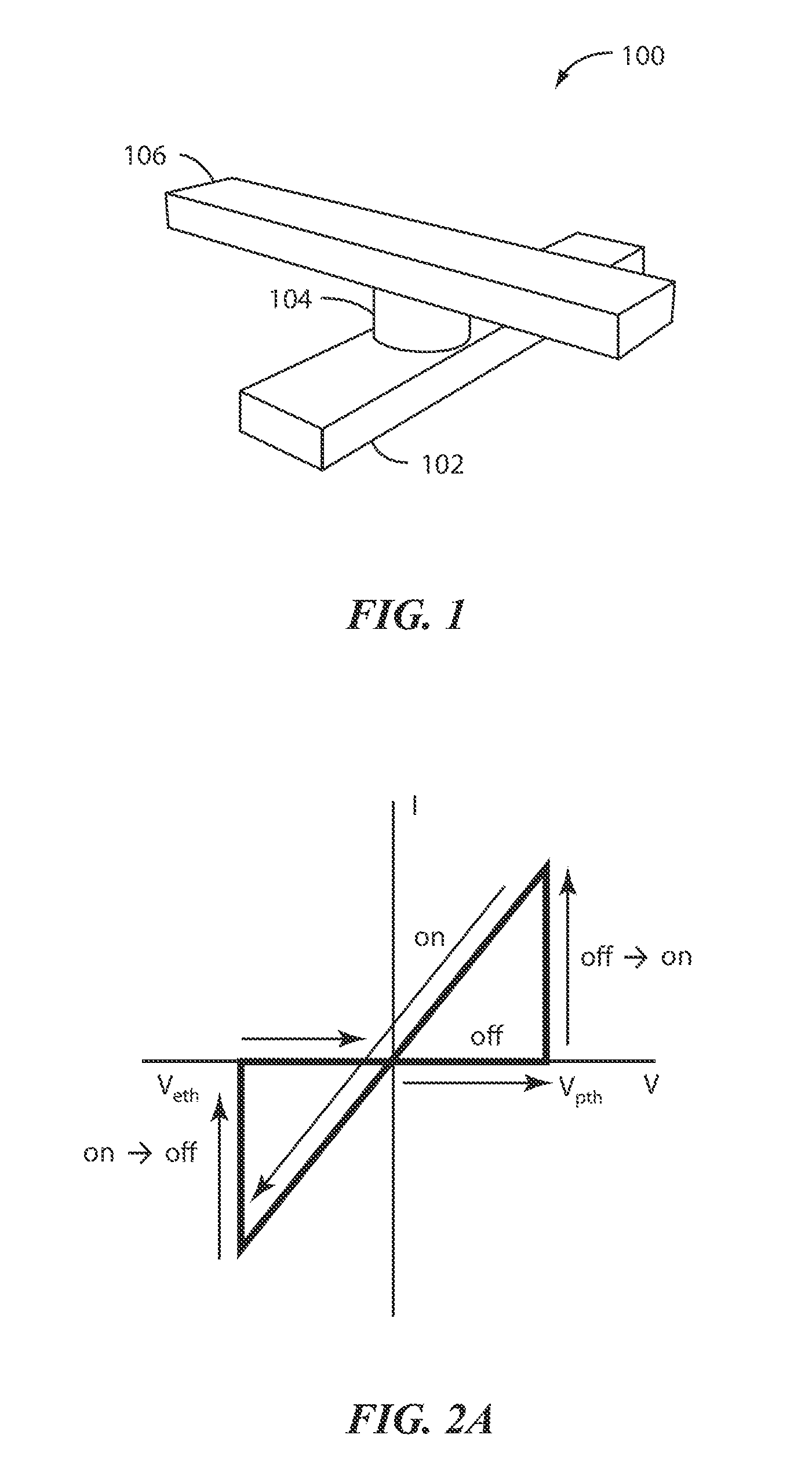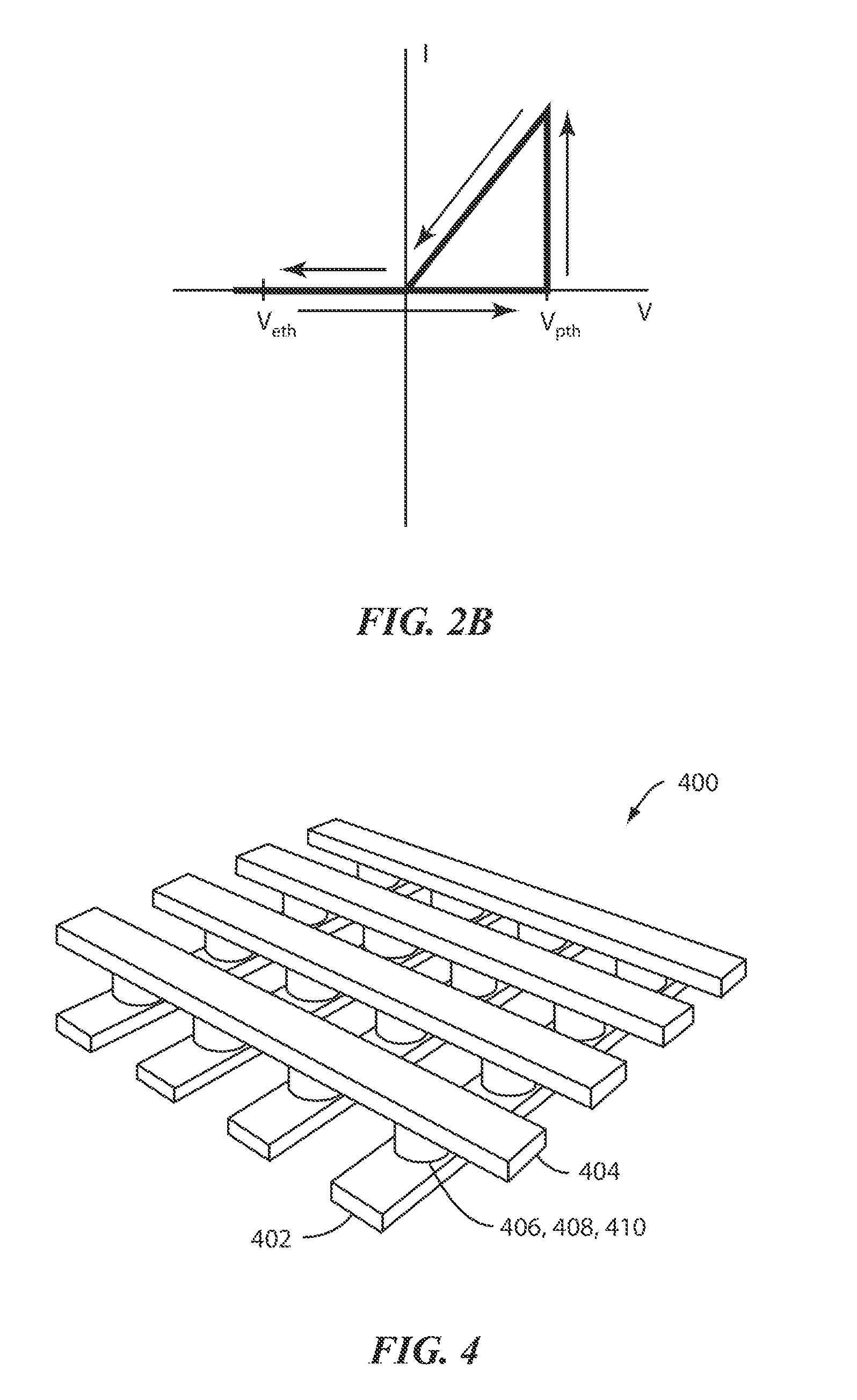Circuit for concurrent read operation and method therefor
a concurrent read and circuit technology, applied in the direction of information storage, static storage, digital storage, etc., can solve the problems of reducing the resistance of the a-si structure, reducing the endurance of the resistive device, and delay in read out, so as to simplify the circuit design, reduce the overall current and power consumption, and speed up the read operation
- Summary
- Abstract
- Description
- Claims
- Application Information
AI Technical Summary
Benefits of technology
Problems solved by technology
Method used
Image
Examples
Embodiment Construction
[0029]The present invention relates to a non-volatile memory device and a circuit for performing a concurrent read operation.
[0030]FIG. 1 illustrates a memory cell 100 in a non-volatile memory device, e.g., a semiconductor memory chip. The memory cell includes a bottom electrode 102, a switching medium 104, and a top electrode 106 according an embodiment of the present invention. The switching medium 104 exhibits a resistance that can be selectively set to various values, and reset, using appropriate control circuitry. The cell 100 is a two-terminal resistive memory device, e.g., resistive random-access memory (RRAM), in the present embodiment.
[0031]The resistive memory cell is a two-terminal memory cell having a switching medium provided between top and bottom electrodes. The resistance of the switching medium can be controlled by applying an electrical signal to the electrodes. The electrical signal may be current-based or voltage-based. As used herein, the term “RRAM” or “resisti...
PUM
 Login to View More
Login to View More Abstract
Description
Claims
Application Information
 Login to View More
Login to View More - R&D
- Intellectual Property
- Life Sciences
- Materials
- Tech Scout
- Unparalleled Data Quality
- Higher Quality Content
- 60% Fewer Hallucinations
Browse by: Latest US Patents, China's latest patents, Technical Efficacy Thesaurus, Application Domain, Technology Topic, Popular Technical Reports.
© 2025 PatSnap. All rights reserved.Legal|Privacy policy|Modern Slavery Act Transparency Statement|Sitemap|About US| Contact US: help@patsnap.com



